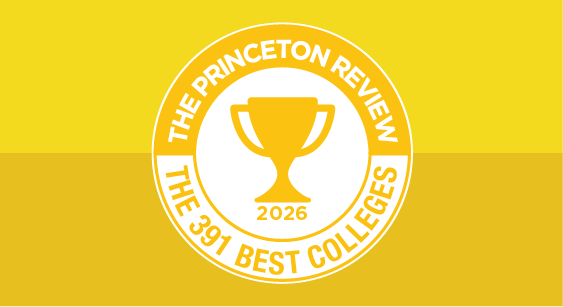Rolling admission and regular admission look a lot alike with one key difference. Colleges with rolling admissions evaluate applications as they are received versus waiting to evaluate all applications after a hard deadline. Schools will continue to evaluate applications until they’ve filled all the slots for their incoming class.

Unlike early action and early decision, rolling admission isn’t an option you choose. It’s the way certain colleges run their admission process. Here’s what you need to know.
Advantages of Rolling Admission
You’re putting together your college list and notice that your dream school accepts applications on a “rolling basis.” Here's how rolling admission can be good for you:
1. It reduces college stress
The rolling admission process is quick. The earlier you apply, the sooner you get your answer, which could be as soon as 4-6 weeks after submitting your application. Many students can even begin senior year with a college acceptance in the bag!
2. It gives you a potential leg-up
The application process can be less competitive if you apply on the early side of the admission window. Colleges still have their whole incoming class to fill and won't be comparing you to already accepted students. (This is not to say that you still don't need a strong GPA, great test scores, and stellar college essays!).
Read More: College Search
3. It allows you to be flexible
Rolling admission decisions aren’t binding like early action decisions. You'll have up until the school's deadline to decide whether you will attend. Rolling admissions schools often have long admission windows, meaning you could still apply after other schools' regular decision deadlines have passed.
How to Reap the Benefits of Rolling Admission
1. Do your research
As you’re putting together your college list, pay attention to deadlines and requirements. Some schools will accept applications on a rolling basis throughout the year, but others will have a specific admission window.
2. Submit rolling applications first
Rolling admission colleges begin taking applications as early as July and continue as late as April. Your chances of admission will be much stronger early on when there are more spaces left to fill, so it’s a smart idea to submit your rolling applications before working on your regular decision apps. The results (acceptance, waitlist, or rejection) could change the rest of your admission strategy.
3. Plan ahead for SAT/ACT prep
Most students end up taking the SAT or ACT more than once. If you’re aiming to submit a rolling admission application in early fall, it’s a good idea to take the test for the first time in October of your junior year (which gives you the option to take the test again in the spring, if needed). Check out our ACT and SAT Testing timelines to help you figure out when to start your prep.
4. Take care with your application
Your competitive advantage will be erased by a slapdash application. Give the same time and attention to your rolling decision applications as you would with your regular decision applications.
Read More: QUIZ: Test Your College Knowledge
5. Don’t forget about financial aid!
As with your regular decision applications, it's important to be on top of your financial aid applications and scholarship search. We recommend filling out the FAFSA as soon as possible after October 1. If you’re applying to college later in the rolling admission window, you run the risk that school aid funds and scholarship will have been awarded to those students who were accepted before you. Research each school's procedures for applying for aid, and have these docs ready to go.
Looking for strategic college advice?
Get one-on-one help from former Ivy League and top tier admission officers. Our College Admission Counselors will help you find, apply, and get accepted to your dream school.
Explore Colleges For You
Connect with our featured colleges to find schools that both match your interests and are looking for students like you.
Get Started on Athletic Scholarships & Recruiting!
Join athletes who were discovered, recruited & often received scholarships after connecting with NCSA's 42,000 strong network of coaches.
Best 391 Colleges
170,000 students rate everything from their professors to their campus social scene.



